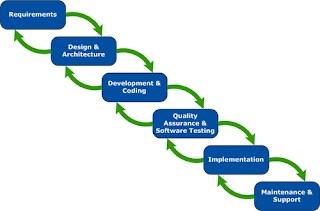This article is published at http://blog.simplilearn.com/project-management/project-management-life- cycles-evolution-over-the-years. The below post is a reproduction of the same.
“The only
thing constant in life is change”
-
Francois de la Rochefoucauld (1613-1680)
In Utopia, for Projects being implemented, there will be no
change in specifications, scope, cost or resources, throughout the Life Cycle
of the Project after the Project Management Plan is base lined and signed off.
There will be no failed Projects and no reworks required. Projects will have no
defects and will be accepted by the Customers on Delivery. Unfortunately, there
is no Utopia and Project Managers globally have to be on their toes to deal
with changing scenarios. This article
attempts to equip Project Managers with the knowledge of various Project Life
Cycle Approaches so as to help them deal with changes on their Projects.
A Project typically has a number of Phases. The number of
phases, their need for the Project and the level of control required over each
phase are primarily defined by the nature of the Project, the complexity of the
same and the industry to which the Project has to cater to.
Project Phases are generally
sequential in nature but may have overlapping relationships. The phases and the
relationships together form the Project Management Life Cycle. Further the
Project Management Life Cycle to be adopted is frequently part of the
Organizations’ Project Management Standards. In real life a Project Manager may
not have a say in the Life Cycle approach to be adopted, but understanding the
different approaches and methodologies can help a Project Manager better adapt
to changes.
It is clear from the above figure
that the Iterative Cycle is nothing but a series of mini-waterfalls. It can be adopted for less complex and small
projects where the deliverables are fairly understood. It allows a relatively better
insulation to changes over the Traditional approach.
The Incremental Project Management Life Cycle –
In this kind of approach the product is developed over a series of incremental
steps. The approach is cyclic in nature and each cycle delivers an added
functionality. The process is repeated till the exit criteria for the product
or deliverable is fully met. Large and complex projects greatly benefit from
following this model. It supports prototyping and customer interaction is quite
high in the build phase of the Project.
The Incremental model is much better equipped to handle change. Each incremental functionality is verified by the customer and hence the relative risk in managing large and complex projects is substantially reduced. On the downside, there is a possibility of gold plating, wherein the functionalities not really required end up
being built into the Product or Deliverable.
The Adaptive Project Management Life Cycle –
These methods are also known as change-driven or Agile methods. This approach to Project Management is a combination of both the Iterative and Incremental
models. The iterations are very rapid and time bound. In the Adaptive Life Cycle, Customer Involvement is the key to successful Projects. The customer and the sponsor form a part of the Delivery Team. Sometimes in Agile approaches, the phases may not be clearly defined. It relies heavily on customer feedback and the
ability of the team to quickly work on the feedback and incorporate the same into the Project. Communication and Collaboration are of
paramount importance in implementing Projects using the Agile
methodologies.
An Agile approach is suitable for complex projects where the requirements are absolutely unclear, but it is
possible to define incremental requirements. Some of the major challenges in
adopting the Agile approach are required high levels of Customer Involvement
(which may not always be possible or practical). Also, having a Virtual Team
may work against the required enhanced collaborative approach.
Conclusion - Project Management Life Cycles have thus evolved from the need of to deliver successful projects. The ability of the Project Team or Organization, to adapt to a particular framework of Project Life Cycle considering the nature of the Project, goes a long way in delivering the Right Product, Result or Service. The Project Management Institute, PMI, has played a significant role in advocating the different Project Management Life Cycle methodologies. The Project Management Body of Knowledge is regularly updated. The PMBOK5 has for the first time, included brief write-ups on the different Project Management Life cycle approaches being followed worldwide for Project Implementation.
Yogeeta
Deshmukh BE, ITIL, PMP
References - PMBOK Vth Edition
Adaptive Project
Framework - Manage Complexity in the face of Uncertainty
– by Robert K. Wysocki
http://www.agilemodelling.com




really nice information to go through this...please share more detail of this...
ReplyDeleteProject Management
http://www.apsense.com/article/a-brief-introductory-guide-to-agile-project-management.html
Hello Robert,
ReplyDeleteDo let me know if you are looking for any specific information.